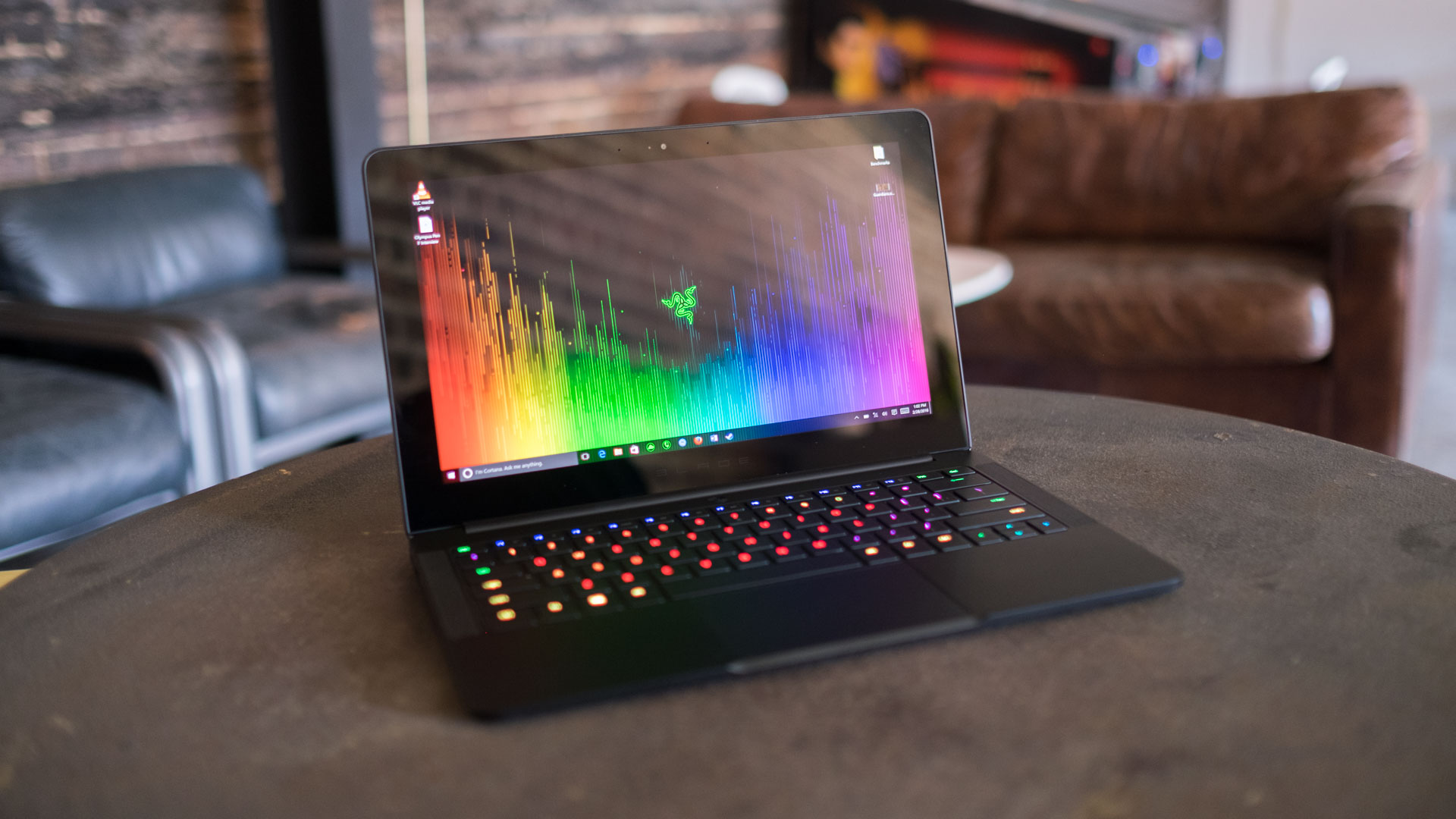Why you can trust TechRadar
Despite its diminutive size, the Razer Blade Stealth is equipped with enough hardy components to get you through a day of heavy multi-tasking. It can even handle some light gaming on its own, though, it needs some help with more demanding games.
Benchmarks
Here's how the Razer Blade Stealth performed in our suite of benchmark tests:
- 3DMark: Cloud Gate: 5,161; Sky Diver: 3,221; Fire Strike: 798
- Cinebench CPU: 309 points; Graphics: 40 fps,
- GeekBench: 3,199 (single-core); 6,829 (multi-core)
- PCMark 8 (Home Test): 2,255 points
- PCMark 8 Battery Life: 2 hours and 35 minutes
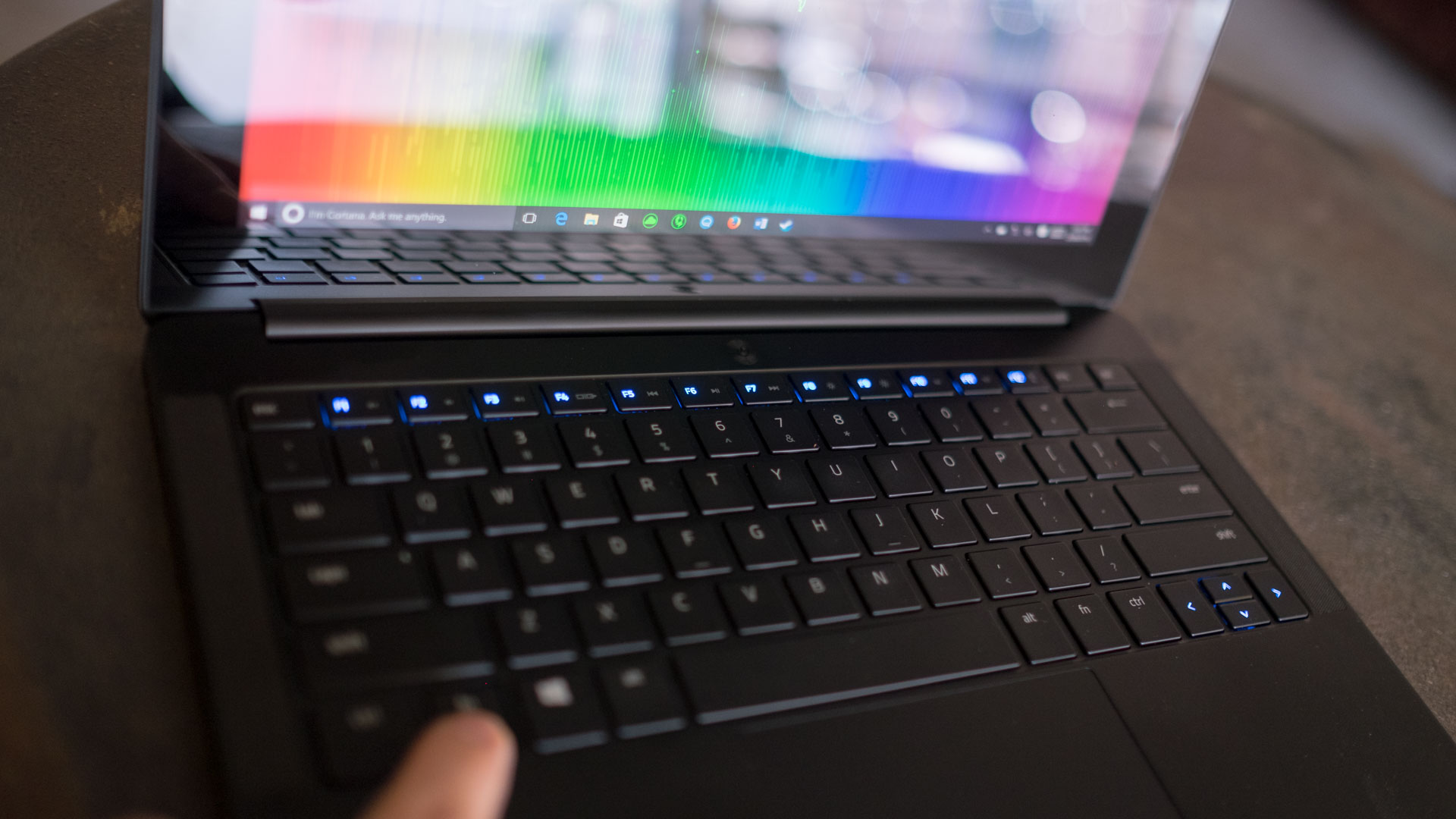
As a standalone Ultrabook, the performs just as well as most of it competitors and excels above them in certain categories, thanks to its beefier processor.
The Blade Stealth has a higher GeekBench 6,829 score over the Dell XPS 13's 6,288 point performance. This is likely due to the 13-inch Ultrabook being powered by a slower 2.3GHz Intel Core i5-6200U. The Lenovo Yoga 900 runs with the same processors, though it falls behind the pack and only puts up 5,591 points.
Surprisingly, the Stealth proves to be less impressive on the graphics front, putting up a Sky Diver score of only 3,221. Comparatively, the Dell and Lenovo's Ultrabooks both scored better with 3,462 and 3,342 points, respectively.
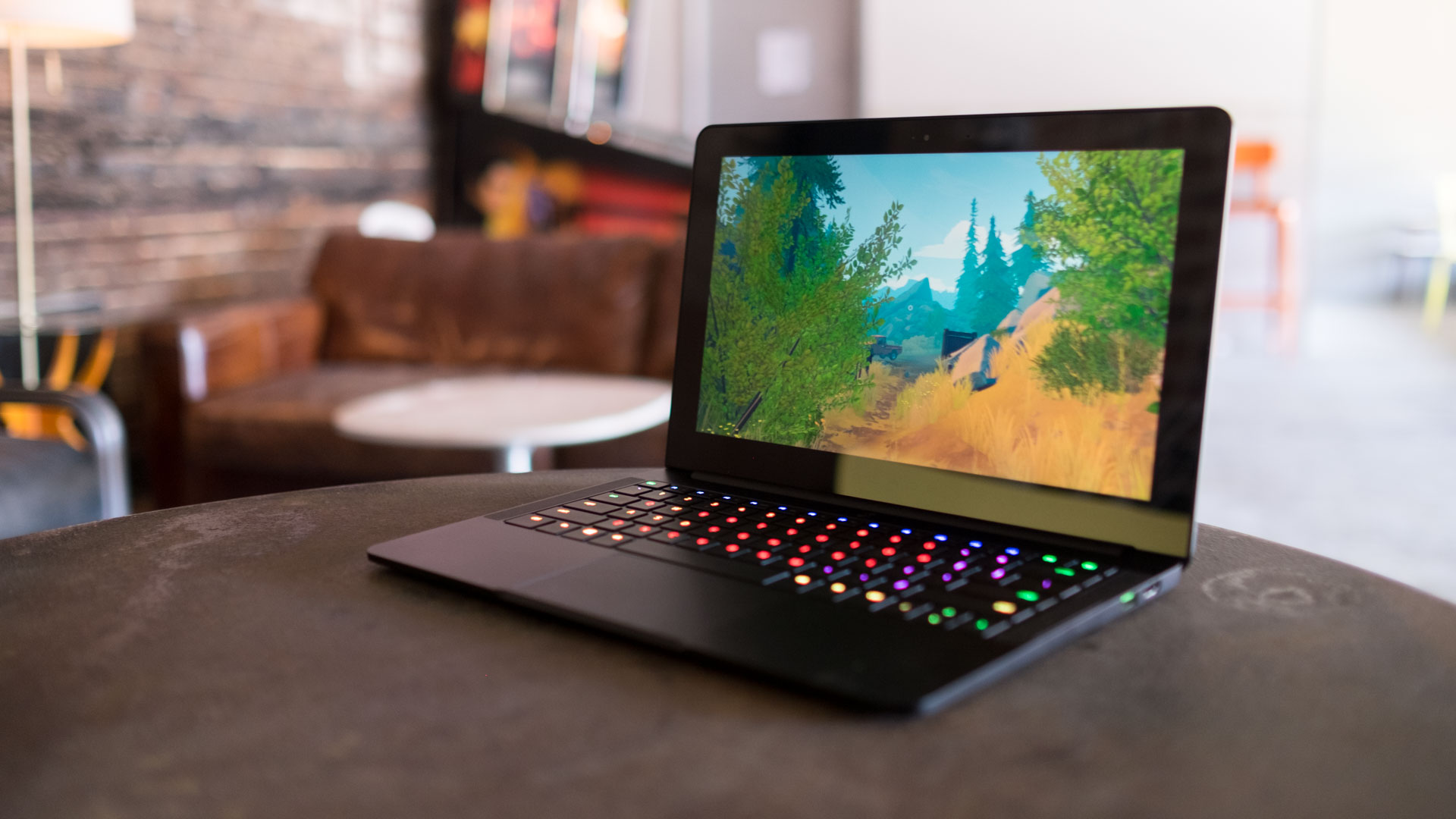
In need of a helping hand
But ultimately, what matters more is whether Razer's smallest laptop yet has the ability to play games on its own, and the answer is a flat no – not without help, that is.
Equipped only with Intel's integrated graphics, you can play small-scope games as well as most indie games. Something as sprawling as Firewatch quickly throws a wrench into the Stealth's gears.
Sign up for breaking news, reviews, opinion, top tech deals, and more.
That said, the 12-inch Ultrabook was a perfect streaming machine while running games from either my gaming desktop or an Xbox One.

The Stealth is really meant to work with an external GPU box called the Razer Core to unlock it's true gaming potential. It's a system similar to the MSI GS30 Shadow and Alienware 17 and Alienware 13, but Razer's solution is the most elegant I've seen, as it's smaller and requires only one thin USB-C cable to work.
With the system fully hooked up to the Razer Core and a desktop setup, I was able to play Fallout 4 on a curved 1,920 x 1,080 display on Ultra settings at a silky smooth 60fps during CES 2016. Of course, that was just one short session and I won't be able to really stress test the Razer Blade Stealth with its accompanying GPU box until later this April.
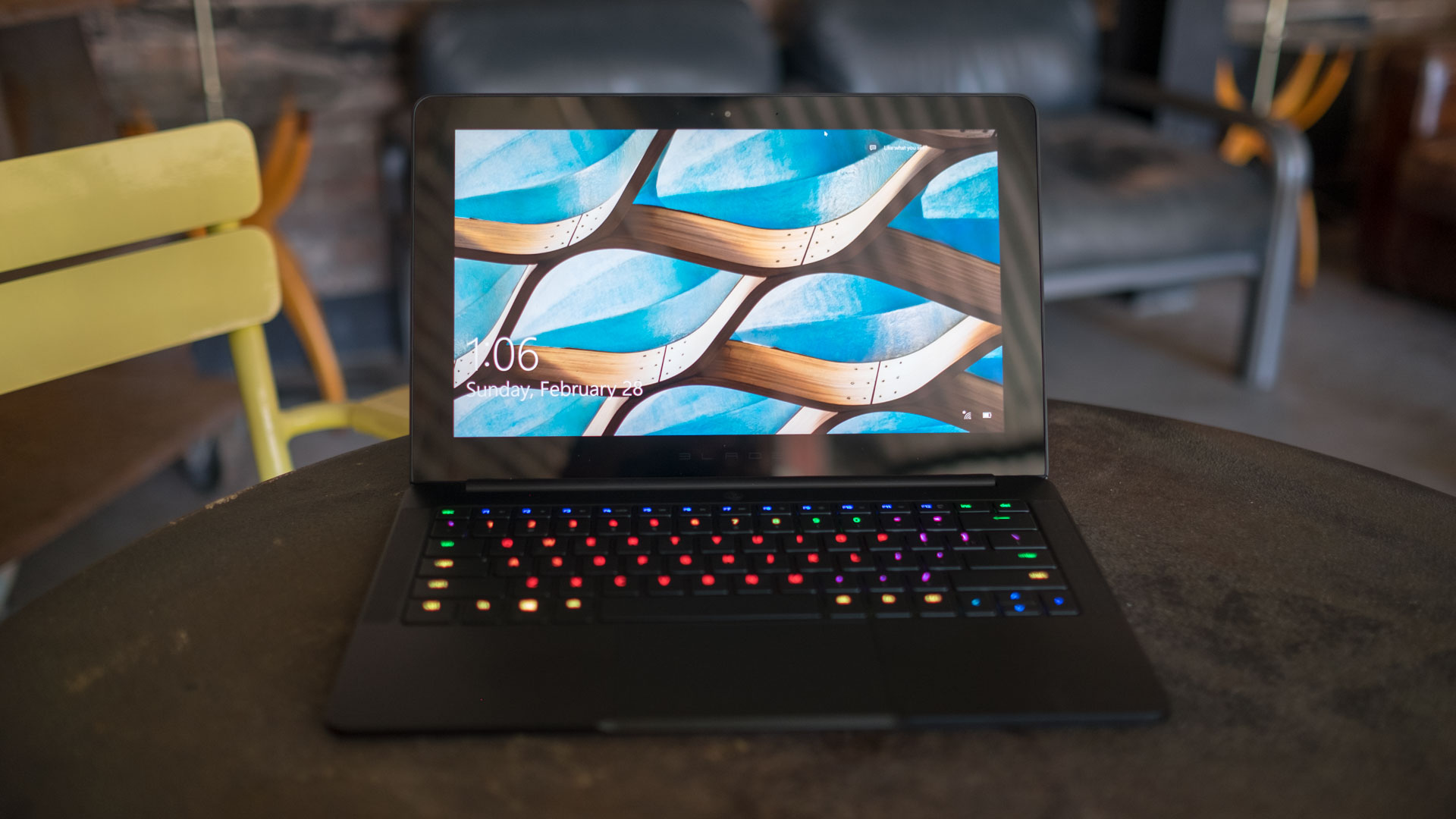
Better than IPS
Rather than using an TN or IPS display panel, the Stealth is equipped with a completely different type of LCD display that utilizes indium gallium zinc oxide (IGZO). In short, the IGZO display contains smaller transistors, allowing Razer to squeeze more pixels into the display, while also increasing refresh rates and lowering power usage.
On the surface, the IGZO display offers a stunning, vibrant picture quality and some of the deep blacks I've ever seen. Whether I was reading an article on Medium, driving through the plains in Forza Horizon 2 or hunting elk in Rise of the Tomb Raider, the screen "pops" in all the right ways.
The speakers reinforce the Blade Stealth as one helluva device for streaming media. Although, the notebook is incredibly small, Razer found enough room for a decent sounding pair of tweeters and even placed them along the sides of the keyboard with upward-facing grilles.
The gaming Ultrabook offers better sound than the XPS 13, but it still doesn't hold a candle to MacBook's surprisingly bass-rich speaker.

Where's the battery gone?
Unfortunately, and somewhat expectedly, the Razer Blade Stealth's greatest weakness is battery life. While running the PCMark 8 battery test, the 12-inch ultra-portable lasted for only a short 2 hours and 35 minutes. The Dell XPS 13, on the other hand, managed to run for 4 hours and 44 minutes while the Lenovo Yoga 900 clocked in at 5 hours and 6 minutes.
With my own daily usage of Firefox, Microsoft Word, Hipchat and streaming Google Music, the Razer laptop lasted all of 2 hours and 48 minutes. Techradar's low-impact movie benchmark test yielded the longest run time of 3 hours and 39 minutes, but that's still awfully short compared to other Ultrabooks that can run for at least five hours.
Worse yet, it takes in excess of 2 hours and 30 minutes to fully recharge the battery. The Stealth lasts an awfully short time and takes an awfully long time to charge: roughly 150 minutes either way. This will likely leave you in a lurch often, and you'll have to plug in for just as long before going mobile again.
That's just plain unacceptable for an Ultrabook, let alone any laptop in 2016.
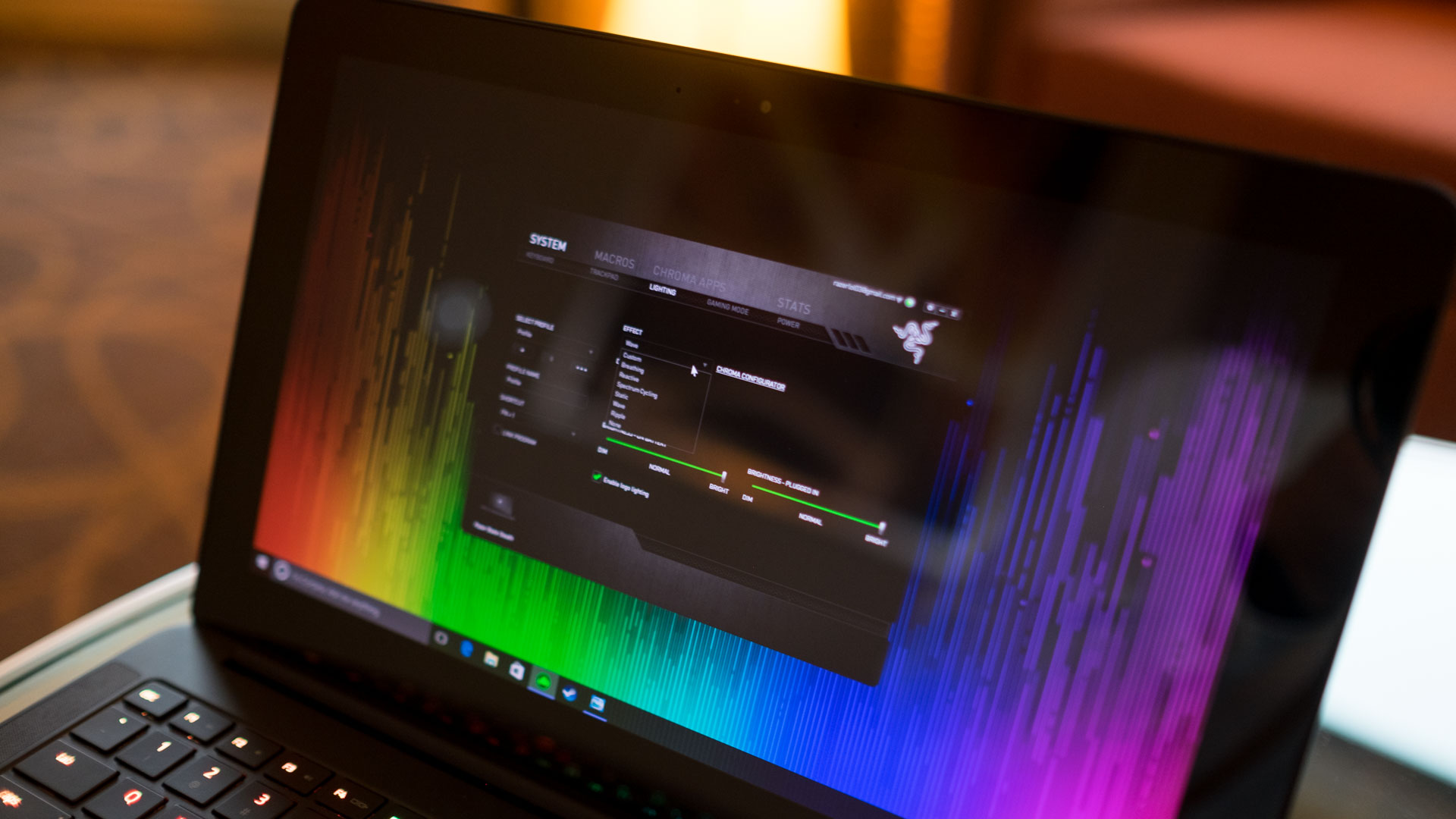
Bundled software
Razer does a great job of keeping the level of preloaded software to the absolute bare essentials. In fact, you'll only find three bundled apps on your system and they're all useful in their own right.
- Razer Synapse – Customize your keyboard backlight setup and sync your settings to the cloud.
- Razer Comms – Razer's built-in voice and text chat client.
- Killer Network Manager – Monitor your network usage, and control how much bandwidth applications use.

Kevin Lee was a former computing reporter at TechRadar. Kevin is now the SEO Updates Editor at IGN based in New York. He handles all of the best of tech buying guides while also dipping his hand in the entertainment and games evergreen content. Kevin has over eight years of experience in the tech and games publications with previous bylines at Polygon, PC World, and more. Outside of work, Kevin is major movie buff of cult and bad films. He also regularly plays flight & space sim and racing games. IRL he's a fan of archery, axe throwing, and board games.
